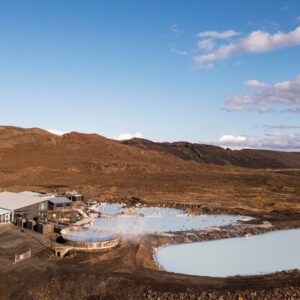Bentonite granules are widely used in agriculture, pharmaceuticals, cosmetics, and industrial applications due to their unique chemical and physical properties. As a natural clay mineral with high absorbency and swelling capabilities, bentonite is essential in applications requiring moisture retention, binding, and chemical stabilization. This article provides a step-by-step guide to the manufacturing process of bentonite granules, covering the extraction, processing, granulation, drying, and quality control stages.
Understanding Bentonite and Its Uses
Bentonite is a type of clay derived from volcanic ash deposits, primarily composed of montmorillonite. Known for its high absorbency and ability to swell upon contact with water, bentonite serves numerous industries:
- Agriculture: Used in soil amendment, pesticides, and fertilizers for its water-retentive properties.
- Industrial: Acts as a binding agent in foundry sands, pelletizing iron ore, and other heavy industries.
- Pharmaceutical and Cosmetic: Used as an additive in medicines and personal care products due to its non-toxic and absorbent qualities.
With the growing demand for bentonite granules in diverse industries, manufacturers need an efficient and quality-controlled manufacturing process to ensure high-quality output.
1. Extraction of Bentonite
The manufacturing process begins with the extraction of raw bentonite from mines. Bentonite is typically mined through open-pit mining methods, which include drilling, blasting, and stripping.
- Drilling: Drills bore into the clay layers, which can range from surface to deep deposits. Sample analysis of these cores determines the quality and grade of bentonite.
- Blasting and Removal: After identification, the bentonite clay is blasted and removed in bulk quantities.
- Transport: The extracted clay is transported to the processing plant for refinement.
Once extracted, bentonite undergoes a thorough cleaning and pre-treatment process to remove impurities and prepare it for further processing.
2. Primary Processing of Bentonite
The raw bentonite is first subjected to primary processing to make it suitable for granulation. Primary processing includes crushing, drying, and milling.
Crushing
The first step in primary processing involves crushing the raw clay to reduce its size. Industrial crushers and grinders break down the material into smaller particles for uniform processing.
- Primary Crushing: Large lumps of raw bentonite are fed into a primary crusher, reducing them to a manageable size.
- Secondary Crushing: The semi-processed clay is then passed through secondary crushers for finer particle size.
Drying
The crushed bentonite is then dried to remove excess moisture, which could interfere with granulation. There are various drying methods:
- Rotary Kiln Dryers: A rotating kiln heats the bentonite, removing moisture as it progresses through the kiln.
- Fluidized Bed Dryers: A fluidized bed dryer provides efficient and uniform drying by circulating hot air through the bentonite particles.
The drying temperature and time must be precisely controlled to prevent thermal degradation while achieving the target moisture content.
Milling
Once dried, the bentonite is milled to achieve the desired particle size for granulation. Fine milling ensures uniformity and enhances the clay’s absorbency and binding properties.
3. Granulation of Bentonite
Granulation is the heart of the manufacturing process. In this stage, the dried and milled bentonite is transformed into granules of specific sizes, making it suitable for its end-use applications.
Agglomeration
The granulation process begins with agglomeration, in which small particles adhere to each other to form granules.
- Pan Granulators: A rotating pan with controlled incline allows bentonite particles to roll into granules. Water or a binding agent is sprayed over the particles to facilitate agglomeration.
- Drum Granulators: A rotating drum tumbles the particles to form granules. As the drum rotates, the bentonite particles clump together with the help of moisture or binders.
Mixing and Moisture Control
For uniform granule formation, the moisture content is carefully controlled, as too much or too little moisture can affect granule strength and uniformity.
- Moisture Adjustment: Water is sprayed intermittently, keeping the clay moist enough to stick but not overly wet.
- Additives: Additives like binders or conditioning agents may be used to enhance the granule’s strength, especially for industrial applications.
4. Drying and Cooling of Granules
After granulation, the bentonite granules are dried and cooled to stabilize them and prepare them for packaging. This stage involves drying to ensure durability and prevent disintegration during handling.
Drying Process
The granules are passed through a drying system to remove any residual moisture. Typically, a fluidized bed or rotary dryer is used.
- Controlled Drying: Temperature and drying time are monitored closely to prevent over-drying, which can lead to brittle granules.
- Batch Drying: In some cases, batches of granules are dried separately to maintain a specific granule size or density.
Cooling
Once dried, the granules are cooled to prevent damage during handling and storage. Cooling also stabilizes the granules, reducing the chance of cracking and disintegration.
- Air Cooling: Cooled air is circulated over the granules to bring them to ambient temperature.
- Rotary Coolers: Similar to dryers, rotary coolers ensure uniform cooling of large batches.
5. Screening and Sizing
In this stage, the dried and cooled bentonite granules are screened and sized to ensure uniformity. This step is essential for quality control, especially for granules used in precision applications like fertilizers.
- Vibrating Screens: Vibrating screens with different mesh sizes separate granules based on size. Oversized and undersized particles are removed.
- Recirculation: Granules that are too large or too small are often reprocessed to achieve the desired size.
6. Quality Control and Testing
Manufacturing high-quality bentonite granules requires a thorough quality control process, as consistency in granule size, strength, and absorbency is crucial.
Testing Parameters
- Moisture Content: Testing ensures that moisture levels meet industry standards.
- Granule Size: Consistent granule size is essential for applications such as pesticides and fertilizers.
- Strength and Durability: Testing the strength and crush resistance of granules ensures they can withstand transportation and handling.
- Absorbency: Absorbency is tested to ensure that the granules meet the application requirements, particularly for moisture retention.
Quality Standards
Most manufacturers adhere to standards such as ISO or ASTM for granule consistency and strength, which is especially important in industrial applications.
7. Packaging and Distribution
After passing quality checks, bentonite granules are packaged and prepared for distribution.
- Packaging Options: Bentonite granules can be packaged in bulk bags, smaller sacks, or even custom packaging for specific clients.
- Labeling and Batch Tracking: Each batch is labeled with information on its quality, size, and intended application, ensuring traceability.
- Storage and Shipping: The final product is stored in dry, climate-controlled conditions to maintain quality until it reaches the end-user.
Environmental Considerations in Bentonite Granule Manufacturing
The bentonite granule manufacturing process, though relatively straightforward, does have environmental impacts, primarily through water and energy use. Many manufacturers adopt eco-friendly practices to minimize their environmental footprint, such as:
- Water Recycling: Water used during granulation and drying processes is often recycled to reduce waste.
- Energy Efficiency: Energy-saving equipment like low-emission dryers and coolers reduces the plant’s carbon footprint.
- Waste Management: Dust and waste from crushing and milling are collected and treated before disposal.
Conclusion
Manufacturing bentonite granules requires a combination of extraction, primary processing, granulation, drying, screening, and quality control. Each step is crucial in transforming raw bentonite into high-quality granules suitable for a variety of applications. By adhering to strict quality standards and embracing sustainable practices, manufacturers can produce bentonite granules that meet the demands of agriculture, industrial, pharmaceutical, and cosmetic industries. This step-by-step process ensures that end-users receive a product that performs consistently and sustainably in their respective applications.






